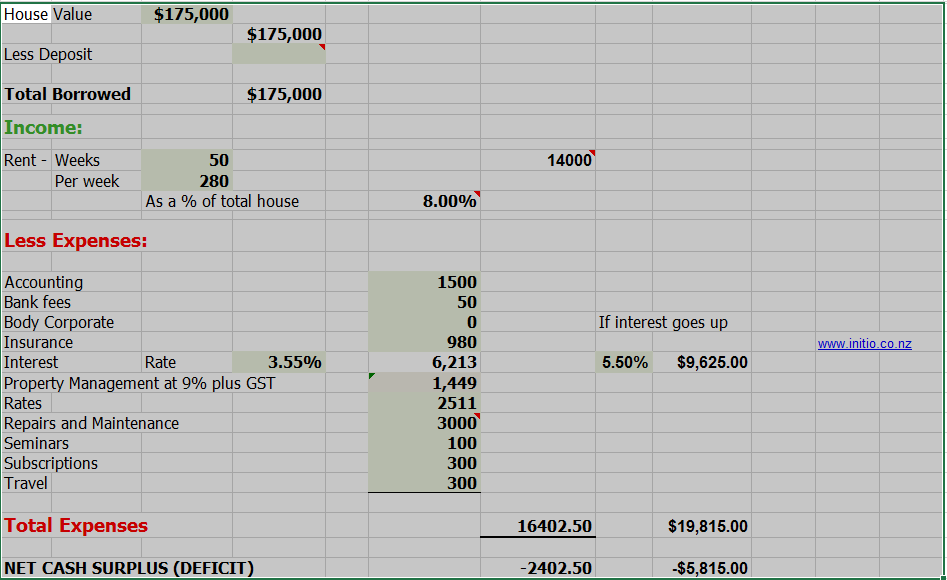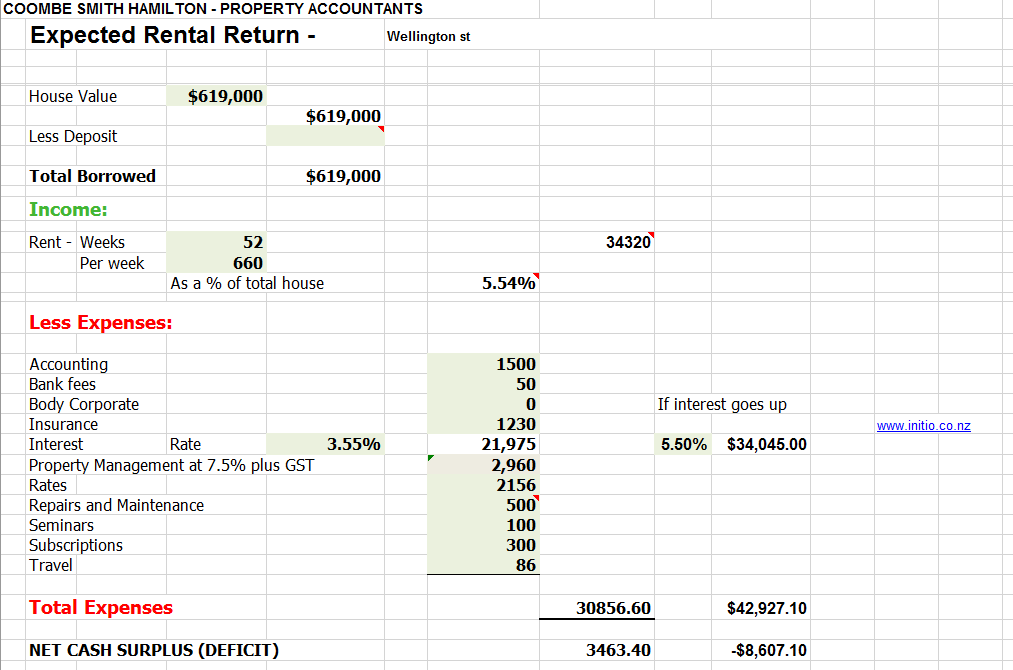Which is better? 8% Gross Yield or 5.5%
It might sound like a really silly question, but which is better?
Higher Yield – Tokoroa Property, 8% Gross Yield
First property I could find in Tokoroa on Realestate.co.nz was 176 Balmoral Drive.

On the market for $229,000.
Currently tenanted $280 pw.
That’s a 6% yield based on 50 weeks. But say you could wave your magic wand, and buy it for $175,000. Now that’s an 8% Gross Yield!
Would you buy it?
The full figures are below, but it loses $2,402.50 per year! Would you still buy it?

Lower Yield – Hamilton Property, 5.5% Gross Yield
First property I could find in Hamilton on Realestate.co.nz was 3/60 Wellington st.

On the market for $619,000.
Currently tenanted $660 pw.
That’s a 5.5% yield based on 52 weeks.
Would you buy it?
The full figures are below, but it makes $3,463.40 positive cashflow per year!

OVERALL GROSS YIELD AND LOCATION
Gross Yield is a great tool for comparing properties in the same location. But be careful with different locations. If one location has low rent, a high Gross yield property can still be negative cashflow!
So make sure you work out and review the full cashflow for any investment you are looking to buy!
In this example, the cashflow on the 5.5% newer property in Hamilton is a lot better than the 8% older property in Tokoroa.
NOTE – this doesn’t mean I would buy either!
I hope you have found this useful
Kind regards
Ross Barnett
Property Accountant | New Zealand
RBNZ Cuts OCR to 2.5%: What It Means for Borrowers
On 8 October 2025, the Reserve Bank of New Zealand (RBNZ) cut the Official Cash Rate (OCR) by 50 basis points to 2.5%, its largest move in more than three years.


